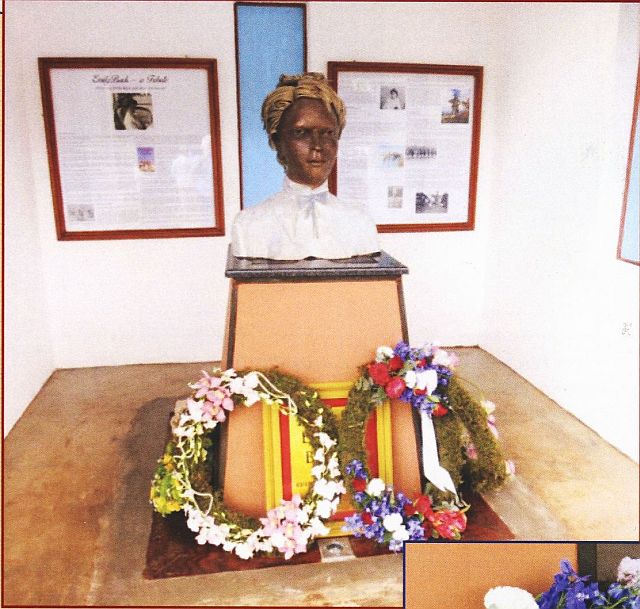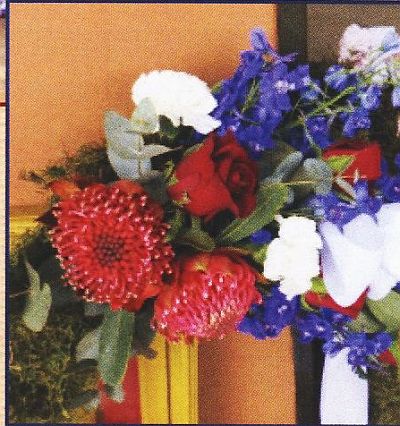

 The South African
The South African

Nico Wessels, Rob Milne, John Pennefather and the Australian Defence Attache Colonel Peter Steele at the unveiling of the bust of Emily Back.
A group of fourteen members of the South African Military History Society travelled by coach to Kedar Heritage Lodge, outside Rustenburg, on Saturday, 7 October 2017.
The occasion was the unveiling of a memorial bust to honour local Anglo-Boer War heroine, Emily Back, by Australian Defence Attache, Colonel Peter Steele. A bronze statue of Emily Back, designed by Nico Wessels and created by local artist Adam Madebe, was unveiled in front of the historic Piet Kruger House, adjacent to one of the Paul Kruger houses on the historic Boekenhoutfontein farm. Also present for the occasion were historian Rob Milne, and Major John Pennefather, an old friend of the Society and a long-time supporter of maintaining the heritage of the Anglo-Boer War in the North-West Province.
We felt it to be a great privilege to be in the company of the people who had gathered to celebrate this historical event. During our short visit to the Kedar Heritage Lodge and the Paul Kruger Country House Museum, we were again introduced to Robert Forsyth's magnificent collection of Anglo-Boer War sculptures, weapons, paintings and a range of war memorabilia. Kedar Lodge now has the most impressive private Anglo-Boer War military collection in South Africa, and this collection just keeps growing! The Society truly appreciates Robert's tireless efforts in preserving the very essence of our Anglo-Boer War heritage.
It was also a special honour to meet, once again, Major Pennefather, and hear about the new project with Martin Stoltz, flying a camera-equipped drone over the Elandsriver battlesite. That's a whole new approach, after many years of technical surveying on the ground! It was also fascinating that many interesting military artifacts have been found in the trenches.

The bust of Emily Back with explanatory texts behind it.

The red blooms are Waratahs.
A wreath of Australian Waratahs was laid at the unveiling of the Emily Back statue. These iconic red flowers, endemic to south-eastern Australia, belong to the same family, Proteaceae, as the South African protea. It was very fitting that they should be laid at the commemoration of an event paying tribute to the heroism of the 19 year old civilian who rode out during the battle of Koster River on 22 July 1900 to tend to the Australian wounded. The flowers also represent the unification of the Australian forces during the South African War; in 1901 all members of the six separate Australian colonial contingents serving in South Africa (Victoria, New South Wales, Queensland, Western Australian, Tasmania and South Australia) were transferred into the new Australian Army, following the Federation of Australia on 1 January 1901.
Return to Journal Index OR Society's Home page
South African Military History Society / scribe@samilitaryhistory.org